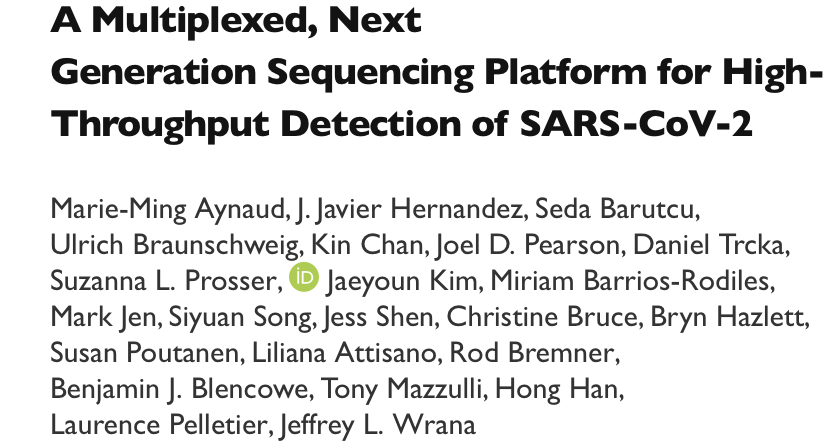1/ Good article on the lag in tracking SARS-CoV2 variants in Canada. Short thread that’s going to annoy some people I respect and a COI: the tech I talk about was developed at #LTRI where I work. https://www.cbc.ca/news/health/coronavirus-variants-surveillance-canada-1.5884667
2/ The CBC article discusses the main approach to identifying viral variants - genomic sequencing. This was done spectacularly well in the UK which has invested a lot more. It identified the B1.1.1.7 variant that just coursed through 125 residents of a LTC home in Barrie. But...
3/ This more infectious variant emerged in UK samples in September. By the time it was acted upon (causing a Holiday lockdown and government U-turn) it was rampant. Why was this? Aside the political aspect, it takes some time to fully sequence and analyse. There was no rush.
4/ To be fair, the sequencing work was meant to be careful, retrospective, to understand the mutational history - not to provide a rapid early warning. This is the case elsewhere too (am not criticizing the UK effort - they’ve been on the forefront).
5/ But what should be entirely obvious now that certain variants have begun to dominate is that cranking up the amount of whole virus sequencing is not the answer, unless the question is to simply document. To identify and isolate fast outbreaks requires a fast turnaround.
6/ That means testing every PCR positive for the possibility it’s a variant. But we can’t just use a PCR dropout test because the variants change and contain many mutations. PCR is fast but insensitive to emerging variants. Sequencing catches everything but is too slow.
7/ Enter C19 SPAR-seq, developed by Jeff Wrana and Ben Blencowe for detecting slice variants in better times. The C19 adaptation allowed for orders of magnitude higher throughput than PCR. It was then adapted to rapid variant detection. And how.
8/ It can readily scan sequences of the key mutations and do so 1000 samples at a time (more is possible). It’s faster than whole genome sequencing, cheaper and new variants can be programmed in. It also runs on tech available in many labs.
9/ So the work flow is:
A. PCR testing.
B. All positives run through SPAR-seq. Variants called, reported to Public Health, tracing initiated.
C. Whole genome sequencing of the interesting variants.
D. New variants plugged into next SPAR-seq assays.
A. PCR testing.
B. All positives run through SPAR-seq. Variants called, reported to Public Health, tracing initiated.
C. Whole genome sequencing of the interesting variants.
D. New variants plugged into next SPAR-seq assays.
10. We have the sequencing infrastructure already. CanCoGen is set up/funded. SPAR-seq can be distributed (basic tech described here: https://www.medrxiv.org/content/10.1101/2020.10.15.20212712v1). What’s needed: links to public health, willingness, urgency. This can’t wait.
11. This is starting to ramp up in collaboration with the @sinaihealth microbiology lab (processes ~300 positive samples a day) and PHO, but it needs replicating around the country. Quickly. We can see the vaccine light, we can’t let variants rob us at the last minute.
12/ This is no longer a science problem. The technology is there. It needs rapid implementation. It needs a surveillance process that is more nimble and directed than the viruses mutation rate. This is no time for perfectly refined solutions. Demand action. /end
P.S. The fantastic team behind C19 SPARseq is listed below. This preprint has just been accepted for publication but the virus variant adaptation of it is a further development.

 Read on Twitter
Read on Twitter


